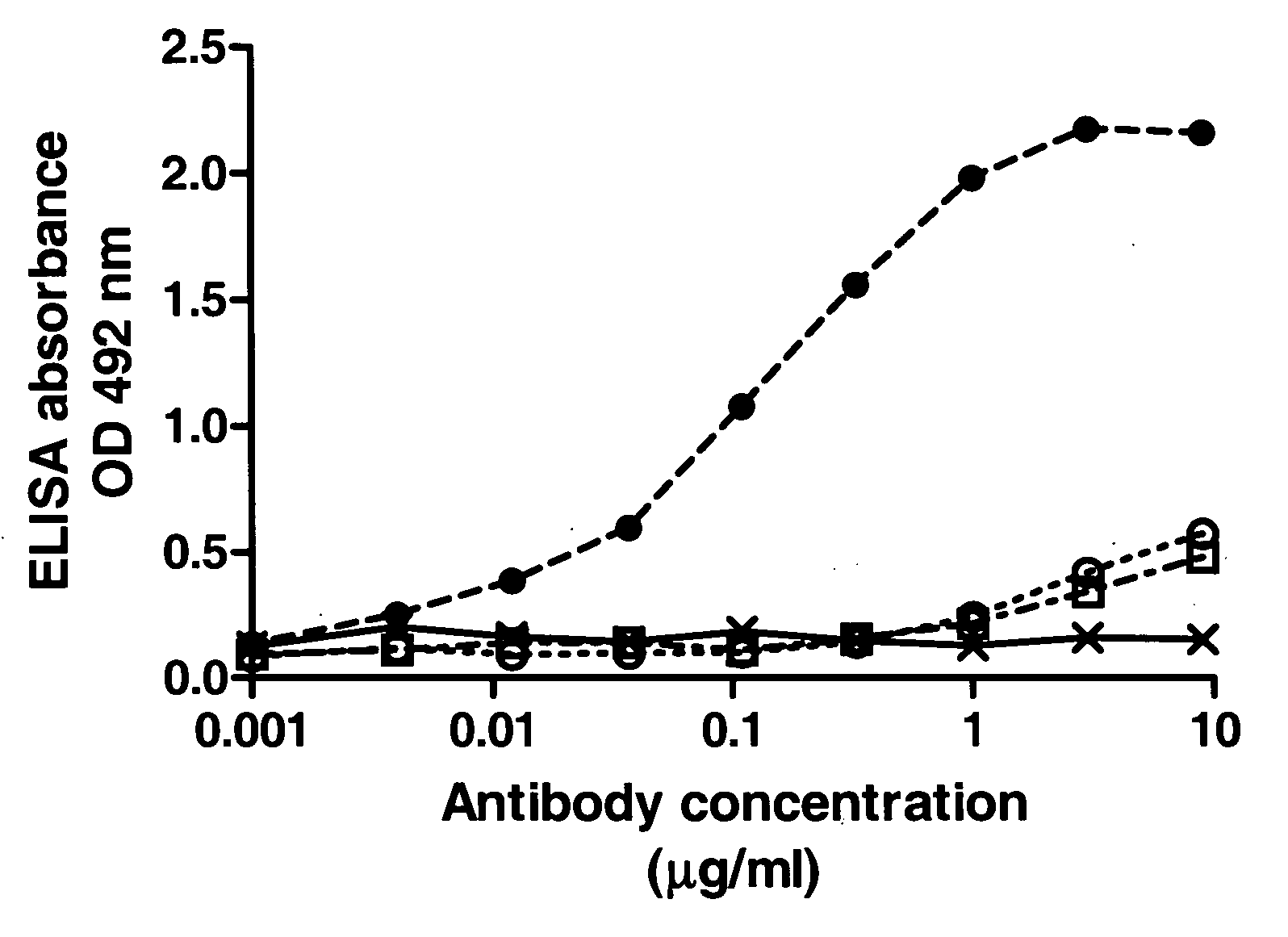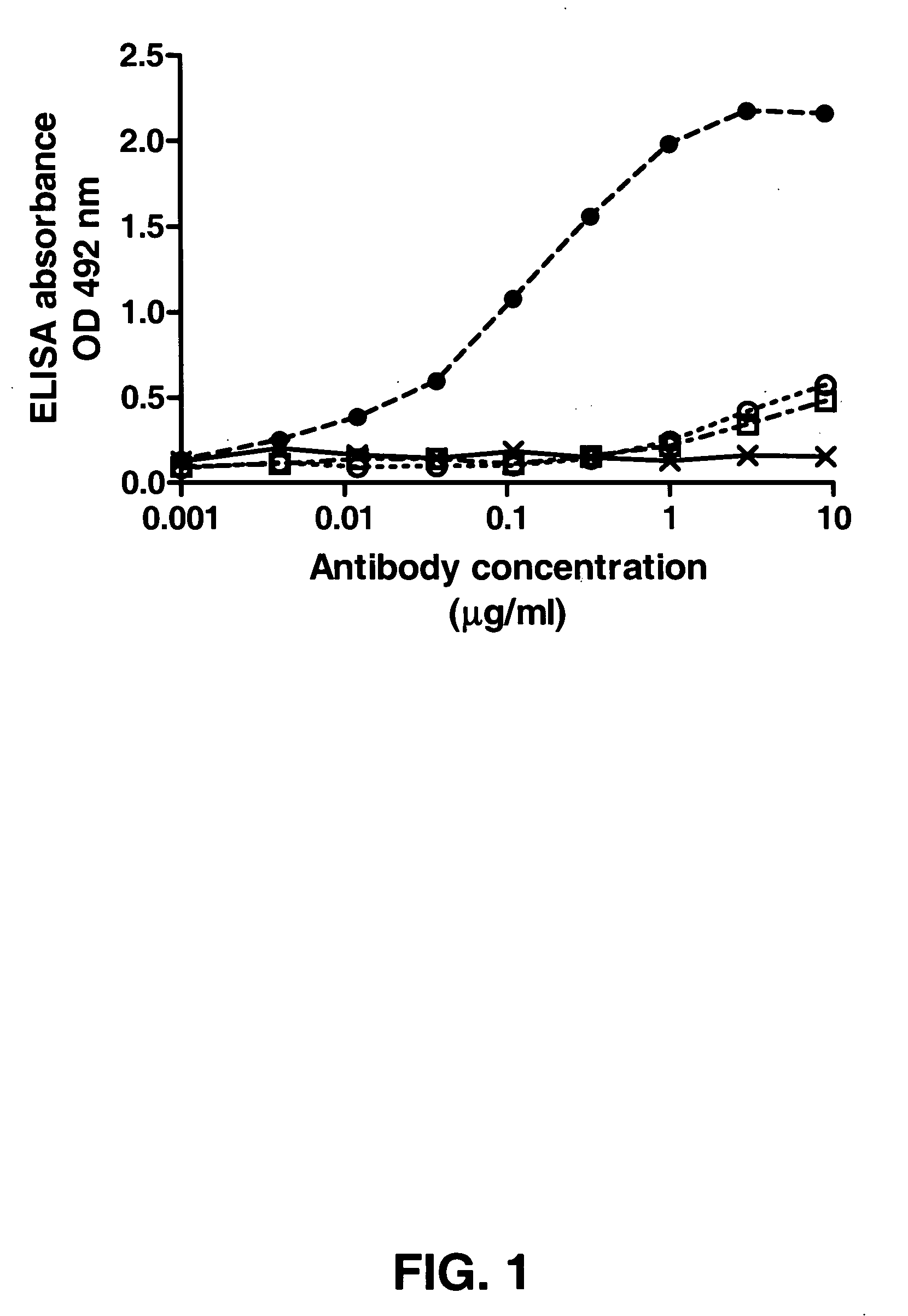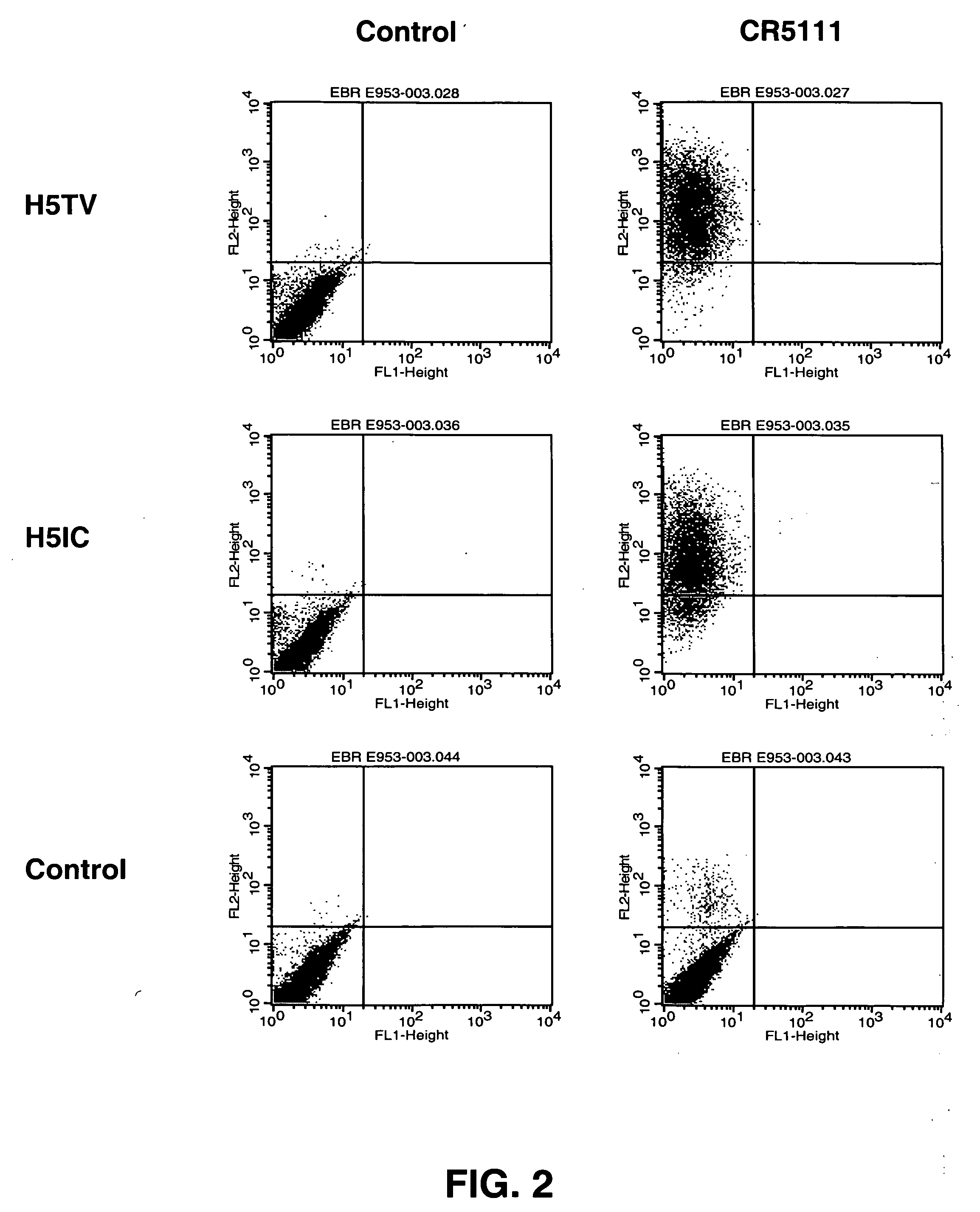Method for Preparing Immunoglobulin Libraries
- Summary
- Abstract
- Description
- Claims
- Application Information
AI Technical Summary
Problems solved by technology
Method used
Image
Examples
example 1
[0050]Construction of scFv Phage Display Libraries Using RNA Extracted from Memory B Cells
[0051]Peripheral blood was collected from normal healthy donors, convalescent donors or vaccinated donors by venapunction using EDTA anti-coagulation sample tubes. A blood sample (45 ml) was diluted twice with PBS and 30 ml aliquots were underlayed with 10 ml Ficoll-Hypaque or Ficoll-Paque Plus (GE-Healthcare) and centrifuged at 900×g for 20 minutes at room temperature without breaks. The supernatant was removed carefully to just above the white layer containing the lymphocytic and thrombocytic fraction. Next, this layer was carefully removed (˜10 ml), transferred to a fresh 50 ml tube and washed three times with 40 ml PBS and spun at 400×g for ten minutes at room temperature to remove thrombocytes. The obtained pellet-containing lymphocytes was resuspended in RPMI medium containing 2% FBS and the cell number was determined by cell counting. Approximately 1×108 lymphocytes were stained for fluo...
example 2
Selection of Phages Carrying Single Chain Fv Fragments Against Antigens
[0062]Antibody fragments were selected using antibody phage display libraries constructed essentially as described above and general phage display technology and MAbstract® technology essentially as described in U.S. Pat. No. 6,265,150 and in WO 98 / 15833 (both of which are incorporated by reference herein). Furthermore, the methods and helper phages as described in WO 02 / 103012 (which is incorporated by reference herein) were used in the present invention.
[0063]Selection was performed against recombinant hemagglutinin subtype H5 (A / Vietnam / 1203 / 2004; Protein Sciences, CT, USA). This external antigen is expressed on the surface of avian influenza strains, but not human strains. The donors from whom the libraries were built had not been exposed to this antigen. H5 antigen was diluted in PBS (1.0 μg / ml).
[0064]In another experiment, selection was performed against an antigen from the cell wall of Streptococcus pneumo...
example 3
Validation of H5-Specific and C-Ps-Specific Single-Chain Phage Antibodies
[0067]Selected single-chain phage antibodies that were obtained in the screenings described above were validated in ELISA for specificity, i.e., binding to H5 antigen or binding to C-Ps antigen. Additionally, the single-chain phage antibodies were also tested for binding to a control antigen, Protifar milk powder. For this purpose, the antigens were coated to Maxisorp™ ELISA plates. After coating, the plates were blocked in PBS containing 2% BSA for one hour at room temperature. The selected single-chain phage antibodies were incubated for 15 minutes in an equal volume of PBS containing 2% BSA to obtain blocked phage antibodies. The plates were emptied and the blocked single-chain phage antibodies were added to the wells. Incubation was allowed to proceed for one hour, the plates were washed in PBS containing 0.1% v / v Tween-20 and bound phage antibodies were detected (using OD 492 nm measurement) using an anti-...
PUM
| Property | Measurement | Unit |
|---|---|---|
| Fraction | aaaaa | aaaaa |
| Volume | aaaaa | aaaaa |
| Fraction | aaaaa | aaaaa |
Abstract
Description
Claims
Application Information
 Login to View More
Login to View More - R&D
- Intellectual Property
- Life Sciences
- Materials
- Tech Scout
- Unparalleled Data Quality
- Higher Quality Content
- 60% Fewer Hallucinations
Browse by: Latest US Patents, China's latest patents, Technical Efficacy Thesaurus, Application Domain, Technology Topic, Popular Technical Reports.
© 2025 PatSnap. All rights reserved.Legal|Privacy policy|Modern Slavery Act Transparency Statement|Sitemap|About US| Contact US: help@patsnap.com



